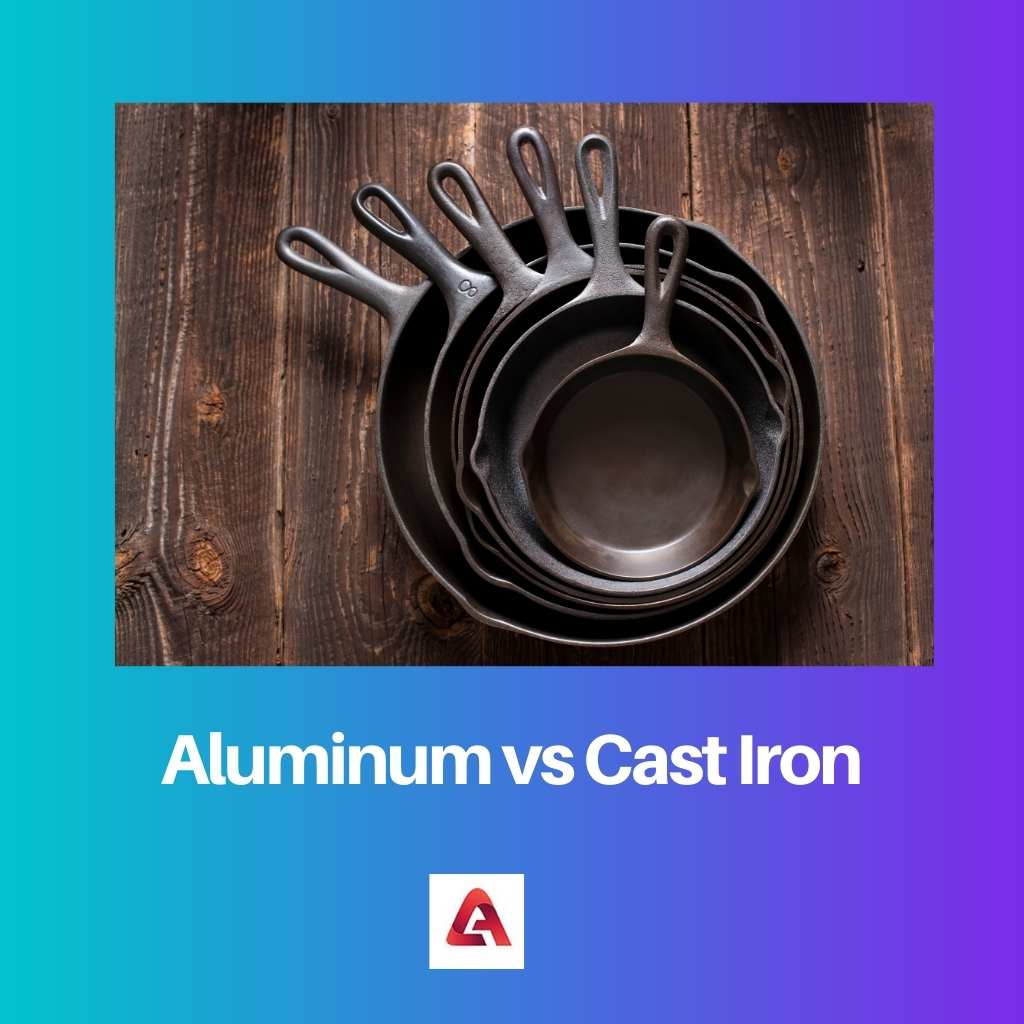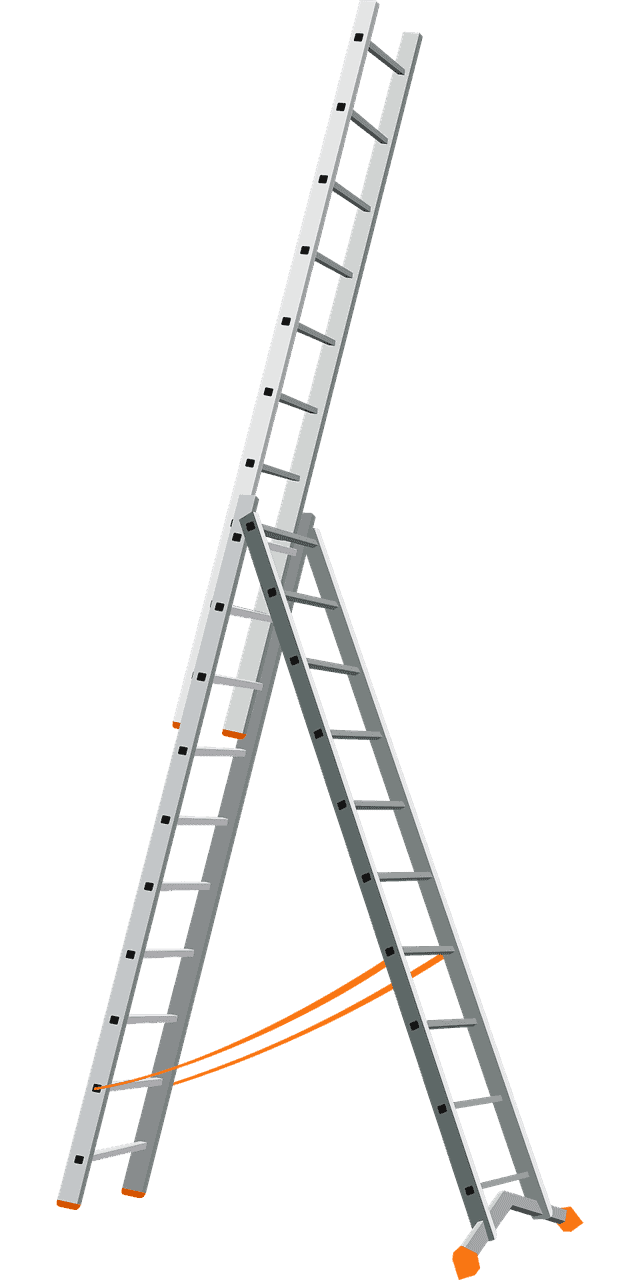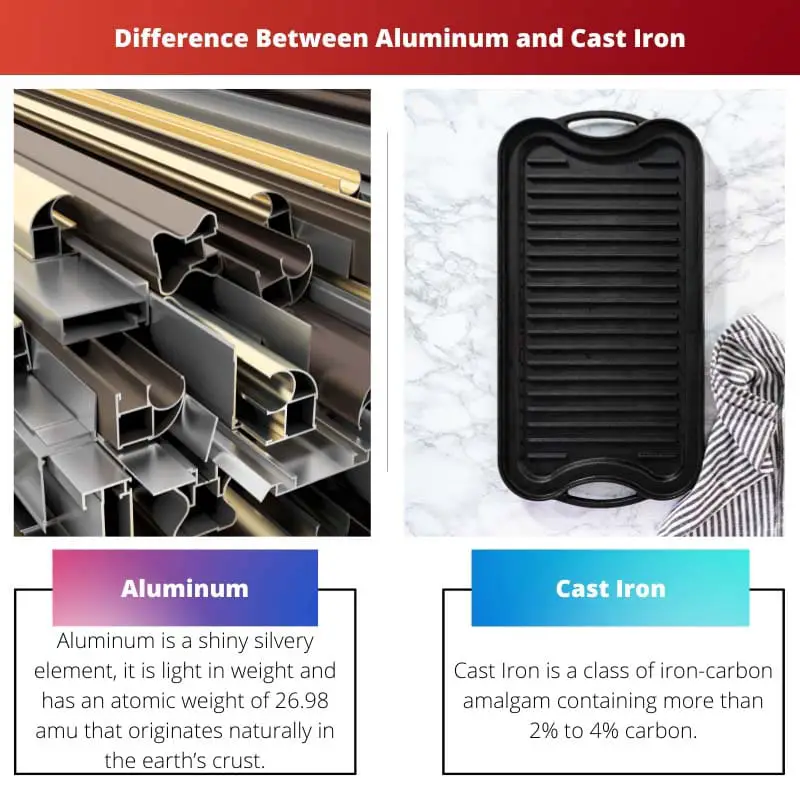Metals are a group of substances that have a proclivity for giving off electrons. Metals are great transmitters of heat and electricity.
Metals are flexible, pliable, and lustrous, and they can combine with different metals to form an amalgam. Metals are of great use in our lives, they are everywhere be it in the kitchen, home décor, factories, etc.
In this article, we will discuss Aluminum and Cast Iron that are commonly used in our everyday life.
Key Takeaways
- Aluminum is lightweight, highly malleable, and corrosion-resistant, whereas cast iron is heavier, more brittle, and prone to rust.
- Cast iron has better heat retention and even heat distribution than aluminum, making it ideal for cooking applications.
- Aluminum is more suitable for manufacturing and construction applications due to its lightweight nature and resistance to corrosion.
Aluminum vs Cast Iron
The difference between Aluminum and Cast Iron is that Aluminum’s use in kitchenware is very new, having emerged in the twentieth century as an outcome of the creation of artificial Teflon coatings. Aluminum is the most prevalent element on the earth’s surface, it is utilized to produce approximately half of all cookware worldwide. On the other hand; Kitchenware made of Cast Iron are being used for ages. It was first used in the West in the seventh century, according to historical records. It has been used in Asia for far longer. Cast iron’s prominence in cookware started to fade in the mid-twentieth century but has recently re-emerged.

Among all the metals Aluminum is the most common nonferrous metal and the most plentiful metallurgical component in the Earth’s crust.
Aluminum is not found in its metal state in nature due to its molecular action, but its derivatives can be found in varying degrees in practically all minerals, flora, and creatures.
Aluminum is a light, shimmering metal. It’s pliable and flexible. . Canisters, aluminum foil, culinary utensils, glass panels, beer barrels, and aircraft parts are all made of aluminum.
Cast iron is an iron amalgam containing 2 to 4% carbon, as well as various levels of silicate and iron, as well as residues of sulfur and phosphorus. It’s manufactured in a blast furnace by melting iron ore.
The fluid iron is cast or dumped and solidified, into raw ingots known as pigs, which are then re-melted in conical burners with scrap and metal alloys materials and reformed into molds to make a range of items.
Comparison Table
| Parameters of Comparison | Aluminum | Cast Iron |
|---|---|---|
| Toughness | Less tough | Tougher |
| Weight | Lighter than Cast Iron | Heavy |
| Durable | Less durable | More durable than Aluminum |
| Year of discovery | 1825 | 5th century B.C |
| Versatility | Less versatile as compared to Cast Iron | More versatile |
What is Aluminum?
Aluminum is a shiny silvery element, it is light in weight and has an atomic weight of 26.98 amu that originates naturally in the earth’s crust.
Since it combines with oxygen and other elements of the earth’s environment, aluminum is seldom found in its native form. Therefore, accounting for 8% of the earth’s outermost crust, its mostly found as an ore known as bauxite.
Although aluminum is an inexpensive metal (consider how easy it is to purchase aluminum foil or a can of soda), converting bauxite into pure aluminum is a laborious and complex task.
Aluminum is one of the most useful metals that can be cast, mixed, and extracted in different ways, it’s properties are unique and make it one of the most flexible materials. Some of its properties are listed below:
– Apart from magnesium, aluminum has a lesser weight than any other industrial metal. Aluminum is a great reflector, particularly for UV light, when it is coated with the appropriate sort of surface.
– Aluminum is a silvery element with no scent or flavor. With the addition of silicon, the material becomes more flexible and soft. The cubical form of the aluminum crystal is face-centered.
– The creation of impurities stratifications causes the structure to concentrate in the less pure metal, the physical properties of Aluminum are greatly influenced by its purity.
Aluminum is used in different sectors for different purposes, some of its uses are listed below:
1) Electricity lines: Because of its superior conductance, Aluminum is perfect for power grid cabling, particularly overhead electricity transfer lines and regional electrical distribution wires.
2) Framing of windows: Aluminum window frameworks are a very durable and economical solution for households and workplaces.
3) Electronics for consumers: Aluminum is progressively being used in the manufacture of cellphones, iPods, desktops, flat-screen Televisions, etc.

What is Cast Iron?
Cast Iron is a class of iron-carbon amalgam containing more than 2% to 4% carbon.
The other elements that are mixed in it are silicon ranging from 1% to 3% by mass, manganese, and residues of Sulphur and phosphorus are also present.
In a Blast Furnace, iron ore is reduced to extract Cast Iron. When Cast Iron cracks, the alloying components affect the color.
White cast iron has abrasive contaminants that enable cracks to easily travel, grey cast iron contains graphite granules that divert a moving crack and introduce numerous new cracks as the substance breaks, and flexure cast iron has spherical shell graphite “growths” that prevent the crack and halt it from spreading further.
Cast Iron is a strong and durable metal that has some unique features and properties, some of its properties that make it widely used metals are as follows:
– Durability: Cast iron is a solid substance that may be toughened by heating and cooling it rapidly. As a result, it’s quite long-lasting metal.
– Castability: The process of casting shapes from Cast Iron is easier when compared to other materials.
-Machinability: Cast iron is nearly flexible up to its maximum tensile strength, resulting in irregular chunks that easily pull free from the material. As a result, when it comes to machinability and durability, cast iron is the preferred metal.
Cast Iron is one is the most versatile and flexible metals, as a result, it is widely used in many fields, some of its uses are listed below:
1) Agricultural products: It can be used to make a variety of agricultural machinery and tools.
2) Building material: Casting mold for light poles, metal stairways, gateways, and other architectural elements.
3)Automobile Industry: It’s utilized in the automotive industry to make parts of different vehicles.

Main Differences Between Aluminum and Cast Iron
1. The melting point of Aluminum is 660.3 °C, whereas the melting point of Cast Iron is 1204°C.
2. Aluminum is a shiny silvery metal, whereas Cast Iron comes in grey and white colors.
3. The density of Aluminum is lighter as compared to Cast Iron.
4. Aluminum is found abundantly in the earth’s crust as compared to Cast Iron.
5. Aluminum oxidizes slower as compared to Cast Iron.

